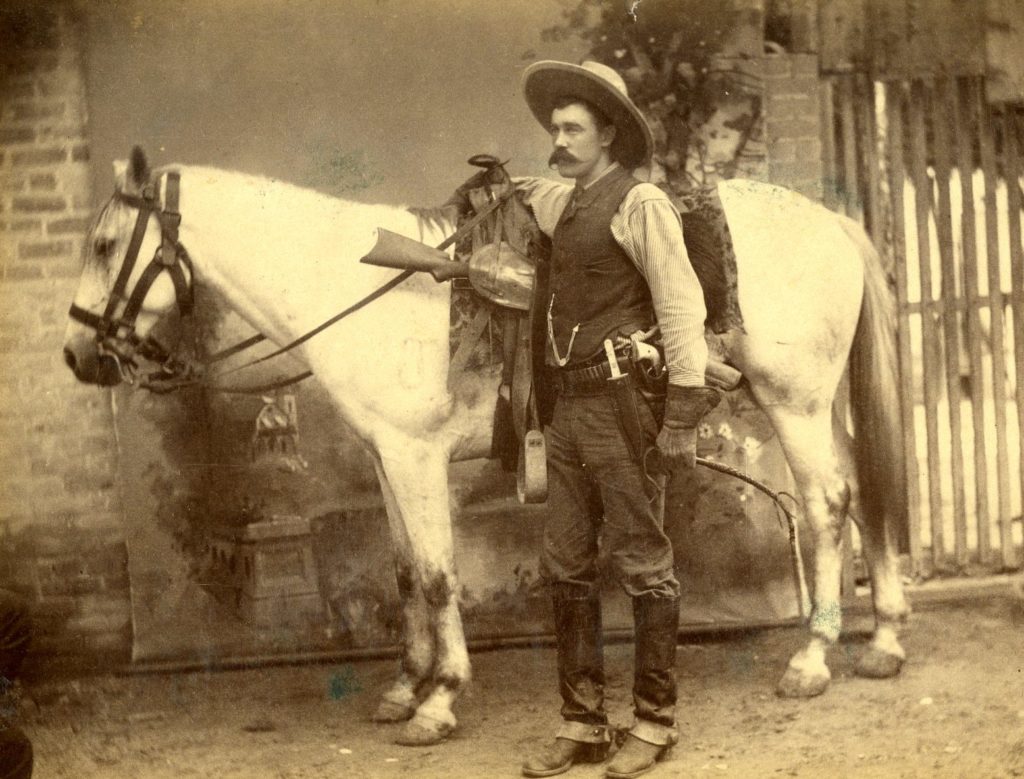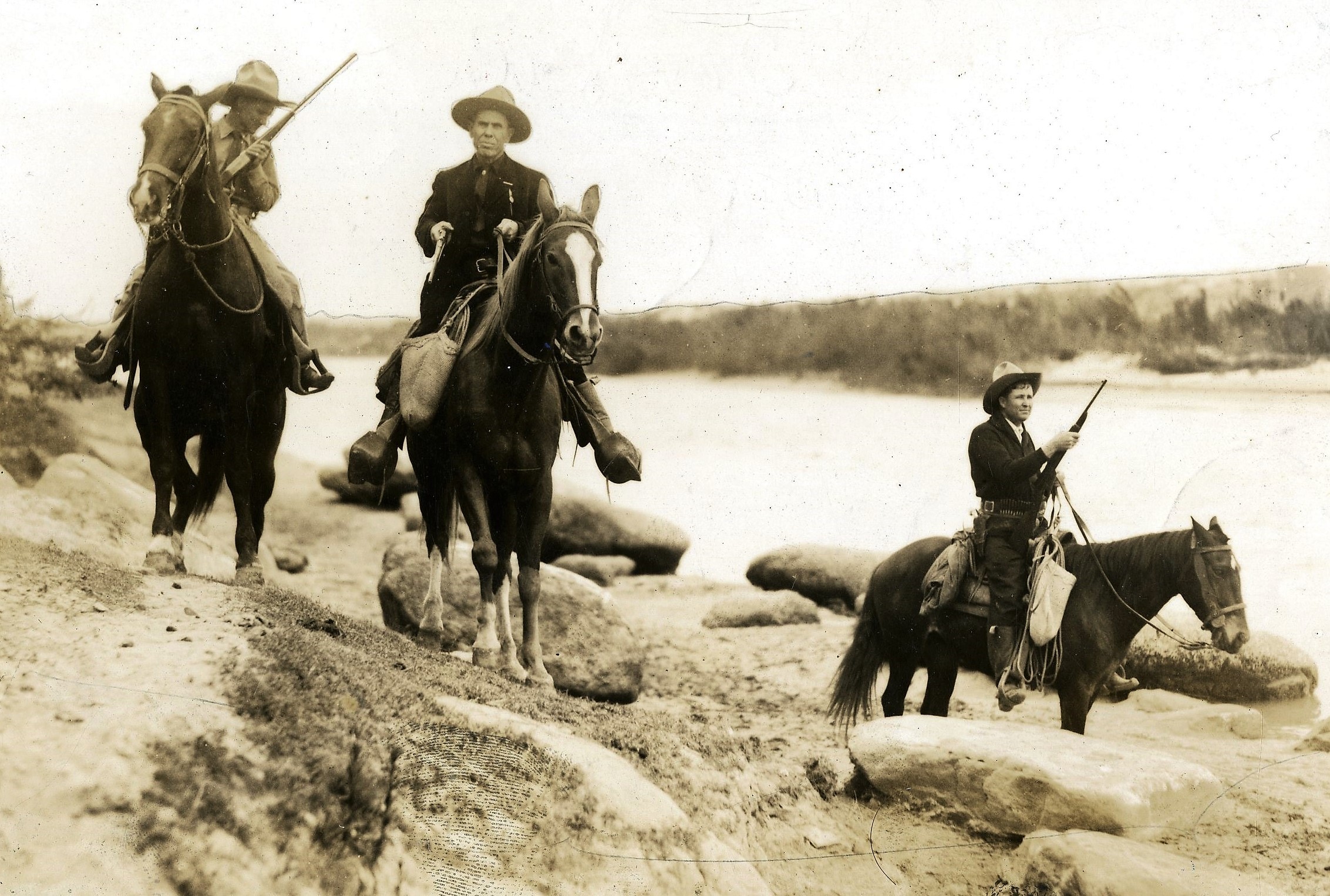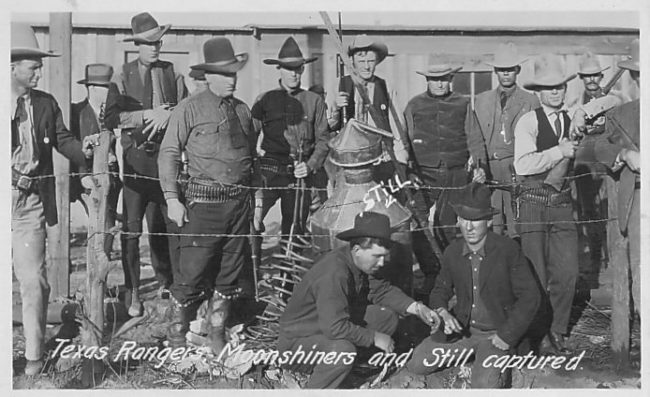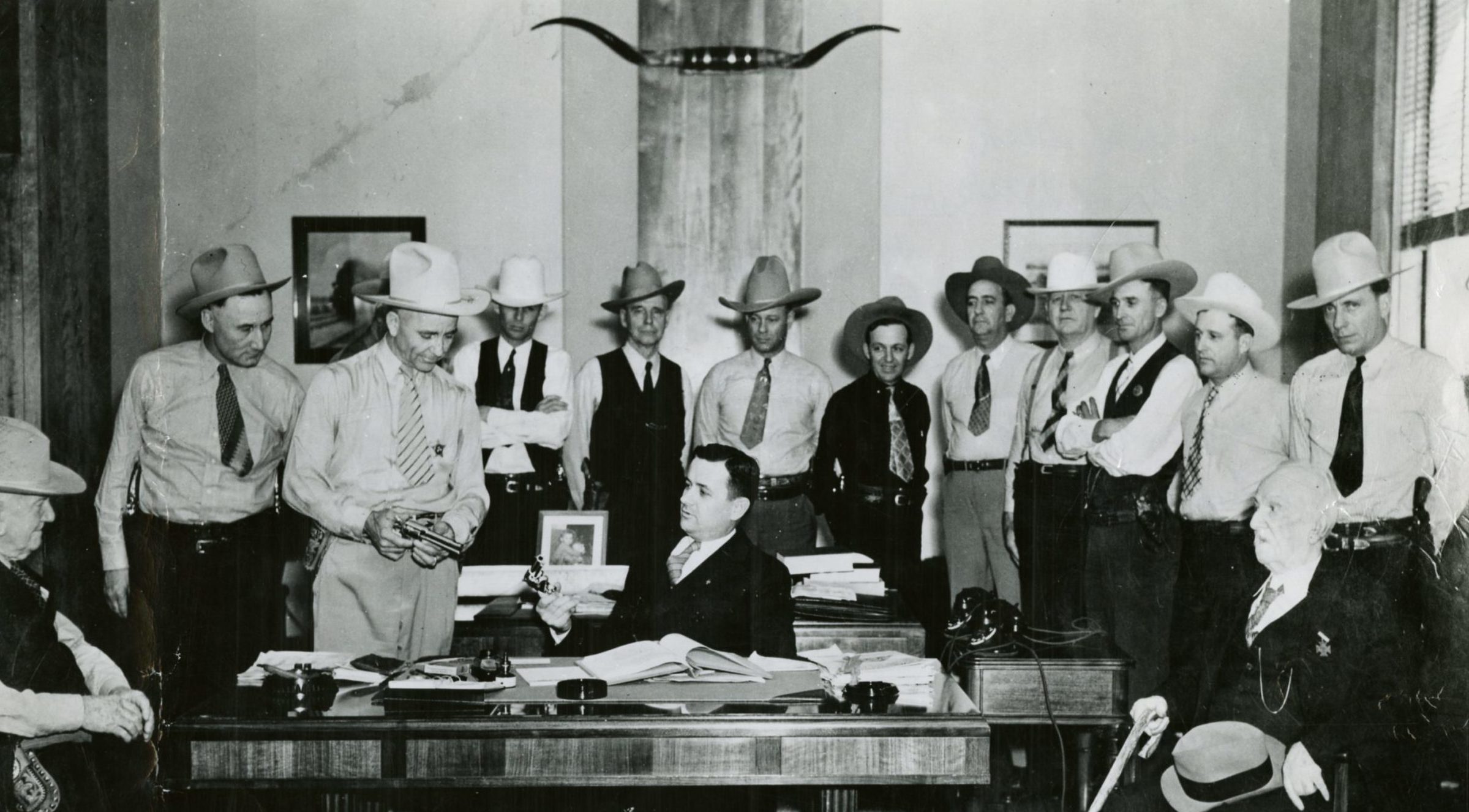Ida Morris Gallery - The First Century: 1823 to 1935
Texas Rangers and the Texas Revolution
Organized under the authority of Stephen F. Austin in 1823, the Rangers were responsible for protecting the settlements from Indian raids. By 1835, the first legally recognized Ranger company in Texas history was organized under the order of General Sam Houston. By this time, tensions were rising between the Mexican government and the Texans and revolution was at hand. Texas Rangers were present throughout the Texas Revolution, from the first conflict at the Battle of Gonzales, to the lonely stand at the Alamo, to the decisive victory on the battlefield of San Jacinto.
The Frontier Battalion: 1874-1900

For thirteen years frontier defense took a backseat to the turmoil of the Civil War and Reconstruction. When the Rangers finally resumed their work, they were no longer citizen-soldiers. For the first time, a Ranger force was permanently established, funded by the state, and managed with efficiency. In 1874 the legislature established two unique military groups to address the ongoing concerns of frontier defense. The Frontier Battalion commanded by Major John B. Jones was organized into six companies of up to 75 men each. Their mission was to protect the frontier settlements from Indian raids. The Special Force of State Troops under Captain Leander McNelly was organized to tame lawlessness along the Mexican border and suppress violent feuds. It was eventually incorporated into the Frontier Battalion.
By the end of the 1870s, the frontier seemed secure and the Rangers turned their attention from Indians to crime fighting in an increasingly lawless state. Rangers stopped feuds, tracked cattle rustlers, and apprehended outlaws. In 1900, a legal technicality called into question the police powers of the Rangers. As a result, the Frontier Battalion was abolished and the Ranger Force reorganized in 1901.
Texas Rangers on the Border: 1901-1919
As the 19th Century ended, it was necessary for the Rangers to adapt to the changing times. In 1901, the Texas Legislature reorganized the Ranger Force, reflecting their transition from frontier defense to law enforcement. During the first two decades of the 20th Century, the State Ranger Force was concentrated in the Rio Grande Valley.
In 1910 Mexico erupted into revolution and violence spilled over into Texas. The revolution would last a decade and create a tense atmosphere along the border. Rangers scouted the border in pursuit of horse and cattle rustlers, fugitives from justice, and smugglers. During this period, Rangers were involved in some of the most violent episodes of Ranger history, including the Porvenir Massacre.

In January of 1919, State Representative José T. Canales demanded an investigation into the conduct of the Ranger force. The Texas Legislature investigated nineteen charges made against the Texas Rangers, which brought to light the dark side of the Ranger force, including abuse of authority, brutality, drunkenness, and racism. Subsequent reforms pushed the Ranger force towards professionalism, which would culminate in the formation of the Department of Public Safety in 1935.
Texas Rangers and World War I
The Texas Rangers had been on the border with Mexico for almost a century at the time of World War I. In 1910 Mexico erupted into revolution. Rebel bands in northern Mexico fought the Mexican Army and each other. Gunrunning from the United States and raids and rustling from Mexico increased all along the border. Revolutionaries retreating from Mexican Federal forces often fled across the Rio Grande. This Bandit War taxed the Texas Rangers’ small numbers, even after the U.S. Army joined them along the Rio Grande to counter the raids. German arms shipments to Mexico continued after the Revolution started; suspicions of deeper German involvement in Mexico grew after World War I began in August 1914.

Texas Rangers and US Army operating together on the Border during World War I.
After the United States entered World War I in 1917, the Texas Rangers expanded to twelve companies. Although Rangers were called away to duties throughout the state, most were needed along the Border, where the pursuit of draft evaders trying to cross the Rio Grande joined the Rangers’ pre-war duties. The end of World War I in November 1918 had little effect on the Rangers’ work on the border. The pace of operations slowed when the Mexican Revolution finally ended in 1920, but the banditry, cattle rustling, and smuggling did not stop. The Texas Rangers had been on the border for almost a century when World War I started. They are still on the border, facing many of the same challenges, a century later.
Texas Rangers During Prohibition: 1920-1935
While border unrest was still a problem, in the 1920s and 1930s Rangers in other parts of the state dealt with civil unrest, labor strikes, Ku Klux Klan activity, political corruption, bootlegging, gambling, and the oil boom. Civil unrest came in many forms in the 1920s and 1930s. When conditions became violent or local law enforcement was inadequate, martial law was sometimes imposed. Occasionally, Texas Governors felt the need to declare martial law and send Texas Rangers and the Texas National Guard into turbulent areas. Thousands of people flocked to the Texas oil fields in the first half of the 20th century seeking their fortunes. Oil boomtowns often attracted other problems, including gambling, bootlegging, theft, and prostitution.
The 18th amendment prohibiting the manufacture, sale, transportation, importation, or exportation of alcohol (bootlegging) went into effect in January 1920. While Rangers stationed on the Texas-Mexico border dealt with liquor smugglers, Rangers in other parts of the state dealt with distillers. Ranger raided businesses and residences known or suspected of alcohol production and distribution. The Rangers seized and destroyed many stills and confiscated thousands of gallons of liquor, between 1920 and 1933, when prohibition was repealed.

Former Rangers Bring Down Bonnie and Clyde

Standing L to R: Prentiss Oakley; Ted Hinton; Bob Alcorn; Manny Gault. Kneeling L to R: Frank Hamer; Jordan Henderson.
Bonnie and Clyde had become infamous bank robbers by the spring of 1934. Lee Simmons, Superintendent of the Texas Prison system, hired Frank Hamer, an ex-Texas Ranger, to pursue and capture the pair. They were killed in a bloody shootout on a country road outside Gibsland, Louisiana. A posse of six men was involved in the shootout. Frank Hamer spent 102 days tracking the pair and was the acknowledged leader of the group. Another ex-Ranger named B.M. “Manny” Gault joined Hamer in April 1934 and traveled with him until the shoot-out. Bob Alcorn and Ted Hinton worked for the Sheriff’s office in Dallas. To have jurisdiction in Louisiana, Hamer needed local law enforcement to participate in the arrest of Bonnie and Clyde, thus Sheriff Henderson Jordan and Deputy Prentiss Oakley were part of the posse.
The men drove out to a stretch of road outside Gibsland and hid in the piney underbrush waiting for the pair to drive by. It is believed that they coerced Ivy Methvin, father of Henry Methvin, to pretend his truck had broken down on the side of the road. On the morning of May 23rd, 1934, Bonnie and Clyde approached in their car. As they slowed down, the 6 men stood and opened fire. It was 9:15 in the morning when the shooting started and by 9:20 am the pair was dead. Over 150 shots had been fired and both criminals had been struck multiple times.
Texas Rangers and Politics: 1900-1935
Between 1901 and 1935, the Ranger Force had been under continuous threat in the legislature, either with talk of abolishing the Rangers or cutting their funding. Since their reorganization in 1901, the Rangers were controlled by the Texas governor and were subject to their political whims.
Governors filled the force with their own political supporters and determined what laws the Rangers did or did not enforce. As the effects of budget cuts, high turnover, political jockeying, and controversies took their toll, the reputation of the Rangers fell to its lowest point in history.

By the 1930s, the Texas Rangers could barely keep up with modern crime. In 1932 a consulting group reported that current law enforcement agencies were too small and ill-equipped to enforce the law. In James Allred’s 1934 campaign for governor, he advocated for a complete overhaul of the state police system. For the Rangers, Allred’s greatest contribution was his role in the establishment of the Department of Public Safety (DPS). The DPS provided the necessary infrastructure and oversight to turn the Texas Rangers into a modern law enforcement agency. The Texas Rangers were now part of the DPS, and Ranger recruits were required to pass an entrance examination and attend training school.
